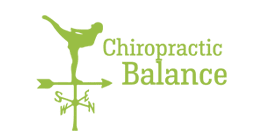Your core muscles play a huge role in your everyday activities, from getting out of bed, walking down the street, and bending over to grab your purse but, most importantly, they literally help you stay upright.
That's because your core muscles are the base support for your entire body. They surround and support your spine and pelvis and connect your upper and lower body, effectively transferring forces from one to the other.
Before doing the following exercises, we want to switch on our core. The key to doing this is so you don't injure yourself. To switch on your core, lye on your back, knees bent. Take a deep breath and focus on:
- Flattening your spine or navel to the floor
- Bring your pelvic bone slightly towards your head
- Contract your pelvic muscles
Benefits of engaging your core:
Increased Balance and Stability
A huge benefit to engaging your core all day is strengthening your overall body. Since the core is the key to all other movements, strengthening it can increase your bodies overall balance and stability. This is not only good for athletes but good for everyone. Increasing your balance and stability will make your daily tasks become easier.
Helps Prevent Injuries
Having a stronger midsection will help you avoid some of those painful injuries that you might have otherwise sustained. Having a solid core that you are engaging daily, will continue to strengthen your body as a whole and help you be able to avoid certain injuries.
Good posture
Weak core muscles contribute to slouching. Good posture trims your silhouette and projects confidence. More importantly, it lessens wear and tear on the spine and allows you to breathe deeply. Good posture helps you gain full benefits from the effort you put into exercising, too.
Strengthen your core to back pain
Back pain is a common side effect of a weak core. When our abdominals are weak, it’s often because our back muscles are overly strong. Building core strength will help bring balance to the front and back of your body. Sitting at a desk all day doesn’t help, either. Not being mindful of how we’re sitting, and not engaging our core, can lead to things like compressed discs in our spine.
Single Leg Extension
Lye on your back with your knees bent out 90 degrees. Place hands on the small of your back. Switch on your core so there is downward pressure on your hands. Slowly straighten your right leg and lower it towards the ground. Stop where you feel the pressure reduce from your hands (this is where your core has lost control). Hold this position for 2 seconds; slowly bring back to 90 degrees. Repeat with the other leg.
Double Leg Extension
Only lower your legs to a height that feels comfortable. Your lower abs are meant to burn and your back must stay straight. Repeat the process from the single leg extension but using both legs. Key tips to remember is engage the core, check your form and if you feel that your core is not switch on to stop. That is enough for you. Form is everything so that you don’t injure yourself.
Planking
This is one of the most effective ab exercises that you can do: it strengthens your abdominal muscles, all of your core muscles, your hips and back. Start by lying face down. Place your elbows and forearms underneath your chest, switch on you core, lift your pelvis under your legs are in a straight plank. If you need to place your knees on the ground. Keep you back flat and don't let your hips sag to the ground.
Resources:
https://www.quora.com/How-many-planks-should-you-do-a-day-and-how-long-per-time-do-you-do-a-plank
https://www.health.harvard.edu/healthbeat/the-real-world-benefits-of-strengthening-your-core
https://www.mindbodygreen.com/articles/5-benefits-of-core-exercises-that-have-nothing-to-do-with-abs


